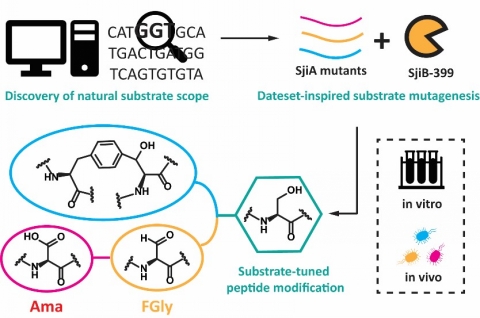Aminomalonate (Ama) is a widespread structural motif in Nature, whereas its biosynthetic route is only partially understood. In this study, we show that a radical S-adenosylmethionine (rSAM) enzyme involved in cyclophane biosynthesis exhibits remarkable catalytic promiscuity. This enzyme, named three-residue cyclophane forming enzyme (3-CyFE), mainly produces cyclophane in vivo, whereas it produces formylglycine (FGly) as a major product and barely produce cyclophane in vitro. Importantly, the enzyme can further oxidize FGly to produce Ama. Bioinformatic study revealed that 3-CyFEs have evolved from a common ancestor with anaerobic sulfatase maturases (anSMEs), and possess a similar set of catalytic residues with anSMEs. Remarkably, the enzyme does not need leader peptide for activity and is fully active on a truncated peptide containing only 5 amino acids of the core sequence. Our work discloses the first ribosomal path towards Ama formation, providing a possible hint for the rich occurrence of Ama in Nature.

https://onlinelibrary.wiley.com/doi/10.1002/anie.202107192
